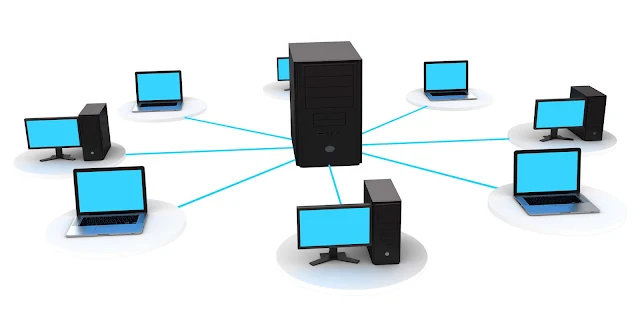
I n today's connected world, accessing information has never been easier, and we owe much of that convenience to computer networks. Thanks to these networks, anyone using a device can share information seamlessly — whether sitting across the room or halfway around the globe.
What is a Computer Network?
According to Wikipedia, a computer network is a telecommunications system that enables computers to exchange data and communicate with one another. Simply put, it is a collection of computers and devices linked together, allowing information sharing, communication, and collaboration across varying distances.
Benefits of Computer Networks
Computer networks offer numerous benefits. Some of the main advantages include:
- Resource Sharing: Devices such as printers, external drives, and internet connections can be shared among multiple computers.
- File Sharing: Transfer data quickly and securely between devices.
- Communication: Stay connected through emails, instant messaging, video calls, and conferencing platforms.
- Cost Efficiency: Sharing resources reduces the need for duplicate hardware and internet services, saving money.
Dangers of Computer Networks
While networks bring many benefits, they are not without risks. Here are some potential dangers:
- Security Threats: Hackers may access sensitive information if proper protection is not in place.
- Viruses and Malware: Networks can spread viruses and malicious software if devices are not secured properly.
- Unauthorised Access: Outsiders may exploit vulnerabilities to access private resources.
Types of Computer Networks
Computer networks are typically classified based on their size and reach. Let us explore the four most common types.
1. PAN (Personal Area Network)

A Personal Area Network (PAN) connects devices like phones, laptops, tablets, and printers over a very short distance — typically within 4 to 6 metres. Think of the Bluetooth link between your smartphone and your wireless earbuds — that is a PAN in action!
Most PANs use technologies such as Bluetooth, Infrared, USB, or Wi-Fi Direct. The best part? You maintain full control of all connected devices.
2. LAN (Local Area Network)

A Local Area Network (LAN) is commonly found in homes, offices, schools, and small businesses. It connects computers and devices within a limited area, such as a single building or campus.
LANs often use Ethernet cables or Wi-Fi (802.11 standards). Every time you connect your laptop to home Wi-Fi, you are joining a LAN!
Key characteristics of LANs include:
- High-speed data transfer (10 Mbps, 100 Mbps, or even 1 Gbps).
- Low setup costs compared to larger networks.
- No requirement for leased telecommunication lines.
3. MAN (Metropolitan Area Network)
A Metropolitan Area Network (MAN) is larger than a LAN but smaller than a WAN. It generally covers a city or a large campus.
MANs are often used by universities, companies, and local governments to connect multiple buildings or branch offices.
Key features of MANs:
- Covers areas ranging from 5 to 50 kilometres.
- Often links several LANs together.
- Uses high-speed fibre optics or wireless backbones.
4. WAN (Wide Area Network)
Finally, the Wide Area Network (WAN) — the largest type of network. WANs span across countries, continents, and even the globe.
The most famous WAN? The Internet itself!
WANs connect multiple LANs and MANs using routers, satellites, undersea cables, and leased telecommunications lines.
Characteristics of WANs:
- Vast coverage area.
- Typically lower data transfer speeds than LANs and MANs (although technology is closing this gap).
- Higher costs for installation and maintenance.
Conclusion
Understanding the types of computer networks helps you appreciate how our digital world remains so seamlessly connected.
Whether you are pairing your phone with earbuds using a PAN, browsing the web at home via a LAN, accessing public Wi-Fi across a city through a MAN, or collaborating across borders using a WAN — networks are the invisible magic making it all possible.



Post a Comment